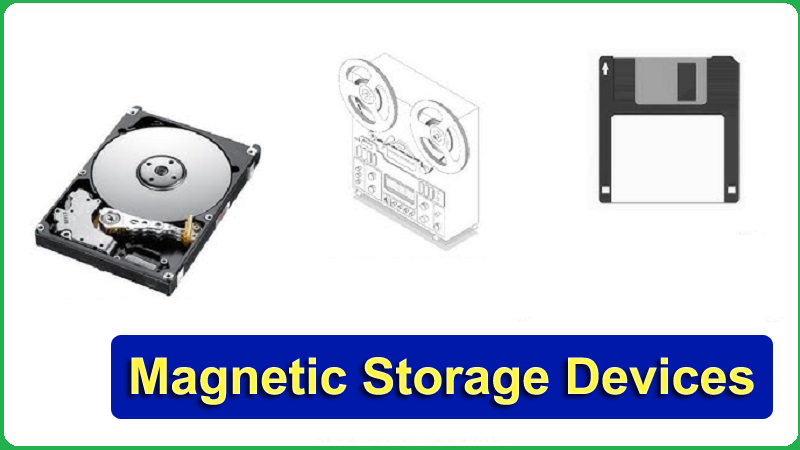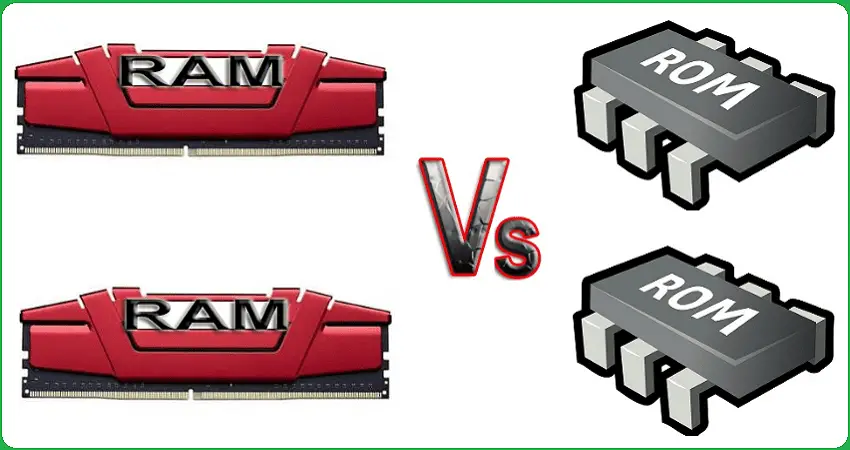What is Magnetic Storage?
Definition: Magnetic storage is also known as “Magnetic Media” or “Magnetic Memory” or “Magnetic Medium“.
In the Magnetic storage devices, all data keep store with using magnetized medium, and those types of data saved in that medium in the binary form like as 0 and 1. This magnetic storage has also non-volatile storage nature. Today’s, mostly people prefer to magnetic medium because on the magnetic storage devices can perform read/write activities very easily.

Magnetic storage devices have huge capacities for storing data that it’s more attractive point. These storage devices are not more costly but their data accessing power is slow. But this magnetic mechanism also going to use in the RAM that have good data accessing power to other.
Examples of Magnetic Storage Devices
Here, we will discuss about many examples of magnetic storage devices (media). Below explained each one-
Types of Magnetic Storage Devices:-
There are different types of magnetic storage medium (device); below mentioned all:
Hard Drive
Hard drive has another name the “Hard Disk Drive”. This drive is a storage area, where allow to store your all data (Files and Folders) in magnetic form with physically. It is capable to store data more than 200 GB.
Hard drive contains the stack of disks which mounted internally with solid encasement, and all data store on that disk. These disks move very higher speed (5500 to 7500 RPM), so any data can retrieve immediately from any area on the hard drive. In Hard Drive, All data does not discard after getting to discontinue power supply
Floppy Disk
IBM introduced Floppy disk in 1969, and called the “Floppy Diskette”. It is a hardware data storage medium that uses in the personal computers. Floppy disk is a plastic cartridge measuring 3.5 inches square and about 2 millimeters thick, and it getsecured with protective casing.
In the floppy disk, applied iron oxide to coat internally for storing data in magnetic form, just similar to hard disk. But, now floppy disk is completely obsolete.
Magnetic Tape
Magnetic Tape was introduced by Fritz Pfleumer in 1928, and primary objective of magnetic tap of using was recording voice. It is traditional technology, but now it replaced by CD and DVD.
Magnetic Drum
Gustav Tauschek developed magnetic drum in 1932 in Austria. Magnetic drum was used as a primary memory in computers, in 1950 to 1960. But, now it is replaced with secondary storage medium. It contains the metal cylinder which coated with magnetic iron-oxide material on which all data (files or folders) can save.
Magnetic drum is not physically removable device, because it permanently placed in the computer. It is capable to access data at higher rate compare to tape or disk storage devices but its storage capacity is lesser to them.
Zip Diskette
Zip diskette was an advance technology to tradition floppy disk, and it used as a secondary storage device. This drive uses to operate the Zip disk. Zip disks had 100 and 250 MB storage space that used to save, share and back up huge amount of data. But, now Zip disk is not getting popular in the market.
SuperDisk
SuperDisk get support with enlarge high density. This drive was getting more popularity along with OEM computers, like as Compaq and Packard Bell PCs. SuperDisk has capable of 120 MB storage over single disk similar size of oldest 1.44 MB floppy diskette, and further few time it was capable of storage 240 MB.
MRAM
MRAM stands for “Magnetoresestive Random Access Memory”. In this technology, magnetic states are using for storing data beyond of electrical charges.



